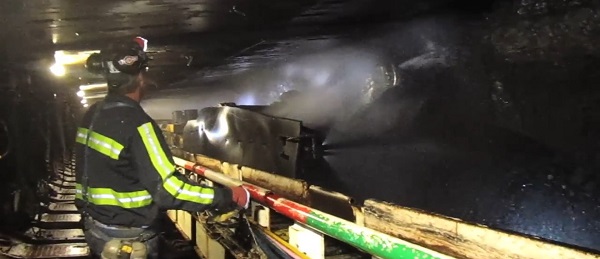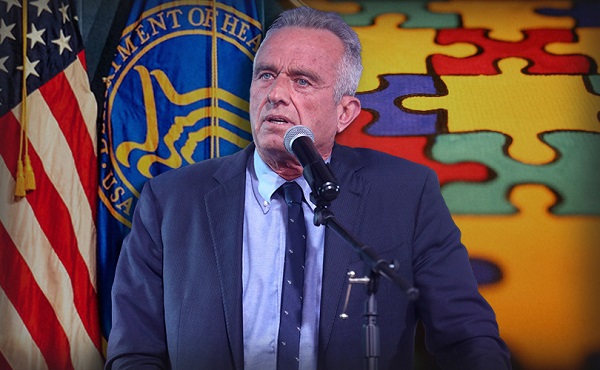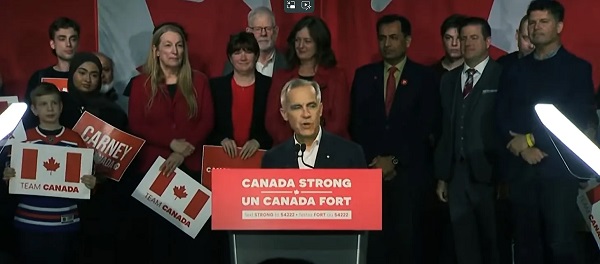Alberta
EAST TANK FARM EQUITY ARRANGEMENT

EAST TANK FARM EQUITY ARRANGEMENT

In the fall of 2017 Suncor, Fort McKay First Nation (FMFN) and Mikisew Cree First Nation (MCFN) announced the completion of the acquisition by FMFN and MCFN of a 49 per cent interest in the East Tank Farm Development (ETFD) valued at approximately $500 million. The two First Nations independently financed the acquisition, with the offering structured and marketed by RBC Capital Markets.
The agreement is unprecedented in size and scale for the First Nations and Suncor and is part of a growing trend of Indigenous communities as equity owners. The investment will provide a steady stream of revenue to both FMFN and MCFN for a minimum period of 25 years. Located 35 kilometres north of Fort McMurray, the ETFD provides storage, cooling and blending services for bitumen received from Fort Hills.
At a signing ceremony on Nov. 22, 2017, Suncor, Fort McKay First Nation (FMFN) and Mikisew Cree First Nation (MCFN) announced the completion of the acquisition by FMFN and MCFN of a 49 per cent interest in Suncor’s East Tank Farm Development (ETFD).
The two First Nations independently financed the acquisition, with the offering structured and marketed by RBC Capital Markets. The agreement is unprecedented in size and scale for the First Nations and Suncor and is part of a growing trend of Indigenous communities as equity owners.
“We’ve completed a historic deal for energy development in Canada. This unique partnership has been part of a journey that demonstrates how innovative thinking and collaborative spirit can result in a mutually- beneficial opportunity and it has changed the way Suncor thinks about how our Aboriginal neighbours may participate in energy development,” said Mark Little, president, Upstream, at the time of the signing and now Suncor’s president and CEO. “Through this partnership we’ve learned a lot about working together to create something significant, and I look forward to continuing to work together on this joint investment with Fort McKay First Nation and Mikisew Cree First Nation for many years to come.”
The agreement is held in a limited partnership with Suncor called Thebacha, the Dene word for “river.” The investment will provide a steady stream of revenue to both FMFN and MCFN for a minimum period of 25 years.
“The economic benefits generated from this deal will help our Nation to build capacity within our businesses, develop infrastructure in our community, fund social economic programs, and provide us with the means to help pay for education and training for our youth, and will be felt in our community for generations to come,” says MCFN Chief Archie Waquan.
Located 35 kilometres north of Fort McMurray, the ETFD is part of the existing East Tank Farm and adjoins the Hot Bitumen Terminal (HBT) and its associated tanks. Once Fort Hills begins to produce bitumen, the ETFD will receive the Fort Hills hot bitumen via the Northern Courier Pipeline.
“The deal represents one of the largest business investment to date by First Nation entities in Canada, and not only demonstrates the great potential for partnerships between First Nations and industry but serves as a model for how First Nations can achieve greater self-determination through financial independence,” said, FMFN Chief Jim Boucher, Chief at the time of the signing. “It is an example of how First Nations and natural resource development companies can find ways to support each other for the mutual long-term benefits.”
Thanks to Todayville for helping us bring our members’ stories of collaboration and innovation to the public.
Click to read a foreward from JP Gladu, Chief Development and Relations Officer, Steel River Group; Former President and CEO, Canadian Council for Aboriginal Business.

JP Gladu, Chief Development and Relations Officer, Steel River Group; Former President & CEO, Canadian Council for Aboriginal Business
Click to read comments about this series from Jacob Irving, President of the Energy Council of Canada.

Jacob Irving, President of Energy Council of Canada
The Canadian Energy Compendium is an annual initiative by the Energy Council of Canada to provide an opportunity for cross-sectoral collaboration and discussion on current topics in Canada’s energy sector. The 2020 Canadian Energy Compendium: Innovations in Energy Efficiency is due to be released November 2020.
Read more on Todayville.
Hydro-Québec takes partnerships, environmental measures and sharing of wealth to new levels
Alberta
Made in Alberta! Province makes it easier to support local products with Buy Local program

Show your Alberta side. Buy Local. |
When the going gets tough, Albertans stick together. That’s why Alberta’s government is launching a new campaign to benefit hard-working Albertans.
Global uncertainty is threatening the livelihoods of hard-working Alberta farmers, ranchers, processors and their families. The ‘Buy Local’ campaign, recently launched by Alberta’s government, encourages consumers to eat, drink and buy local to show our unified support for the province’s agriculture and food industry.
The government’s ‘Buy Local’ campaign encourages consumers to buy products from Alberta’s hard-working farmers, ranchers and food processors that produce safe, nutritious food for Albertans, Canadians and the world.
“It’s time to let these hard-working Albertans know we have their back. Now, more than ever, we need to shop local and buy made-in-Alberta products. The next time you are grocery shopping or go out for dinner or a drink with your friends or family, support local to demonstrate your Alberta pride. We are pleased tariffs don’t impact the ag industry right now and will keep advocating for our ag industry.”
Alberta’s government supports consumer choice. We are providing tools to help folks easily identify Alberta- and Canadian-made foods and products. Choosing local products keeps Albertans’ hard-earned dollars in our province. Whether it is farm-fresh vegetables, potatoes, honey, craft beer, frozen food or our world-renowned beef, Alberta has an abundance of fresh foods produced right on our doorstep.
Quick facts
- This summer, Albertans can support local at more than 150 farmers’ markets across the province and meet the folks who make, bake and grow our food.
- In March 2023, the Alberta government launched the ‘Made in Alberta’ voluntary food and beverage labelling program to support local agriculture and food sectors.
- Through direct connections with processors, the program has created the momentum to continue expanding consumer awareness about the ‘Made in Alberta’ label to help shoppers quickly identify foods and beverages produced in our province.
- Made in Alberta product catalogue website
Related information
Alberta
Province to expand services provided by Alberta Sheriffs: New policing option for municipalities

Expanding municipal police service options |
Proposed amendments would help ensure Alberta’s evolving public safety needs are met while also giving municipalities more options for local policing.
As first announced with the introduction of the Public Safety Statutes Amendment Act, 2024, Alberta’s government is considering creating a new independent agency police service to assume the police-like duties currently performed by Alberta Sheriffs. If passed, Bill 49 would lay additional groundwork for the new police service.
Proposed amendments to the Police Act recognize the unique challenges faced by different communities and seek to empower local governments to adopt strategies that effectively respond to their specific safety concerns, enhancing overall public safety across the province.
If passed, Bill 49 would specify that the new agency would be a Crown corporation with an independent board of directors to oversee its day-to-day operations. The new agency would be operationally independent from the government, consistent with all police services in Alberta. Unlike the Alberta Sheriffs, officers in the new police service would be directly employed by the police service rather than by the government.
“With this bill, we are taking the necessary steps to address the unique public safety concerns in communities across Alberta. As we work towards creating an independent agency police service, we are providing an essential component of Alberta’s police framework for years to come. Our aim is for the new agency is to ensure that Albertans are safe in their communities and receive the best possible service when they need it most.”
Additional amendments would allow municipalities to select the new agency as their local police service once it becomes fully operational and the necessary standards, capacity and frameworks are in place. Alberta’s government is committed to ensuring the new agency works collaboratively with all police services to meet the province’s evolving public safety needs and improve law enforcement response times, particularly in rural communities. While the RCMP would remain the official provincial police service, municipalities would have a new option for their local policing needs.
Once established, the agency would strengthen Alberta’s existing policing model and complement the province’s current police services, which include the RCMP, Indigenous police services and municipal police. It would help fill gaps and ensure law enforcement resources are deployed efficiently across the province.
Related information
-

 2025 Federal Election1 day ago
2025 Federal Election1 day agoRCMP Whistleblowers Accuse Members of Mark Carney’s Inner Circle of Security Breaches and Surveillance
-

 2025 Federal Election2 days ago
2025 Federal Election2 days agoMEI-Ipsos poll: 56 per cent of Canadians support increasing access to non-governmental healthcare providers
-

 Health2 days ago
Health2 days agoTrump admin directs NIH to study ‘regret and detransition’ after chemical, surgical gender transitioning
-

 Business8 hours ago
Business8 hours agoChina, Mexico, Canada Flagged in $1.4 Billion Fentanyl Trade by U.S. Financial Watchdog
-

 2025 Federal Election1 day ago
2025 Federal Election1 day agoBureau Exclusive: Chinese Election Interference Network Tied to Senate Breach Investigation
-

 Daily Caller6 hours ago
Daily Caller6 hours agoTrump Executive Orders ensure ‘Beautiful Clean’ Affordable Coal will continue to bolster US energy grid
-

 2025 Federal Election17 hours ago
2025 Federal Election17 hours agoTucker Carlson Interviews Maxime Bernier: Trump’s Tariffs, Mass Immigration, and the Oncoming Canadian Revolution
-

 Autism2 days ago
Autism2 days agoAutism Rates Reach Unprecedented Highs: 1 in 12 Boys at Age 4 in California, 1 in 31 Nationally



